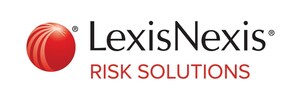ATLANTA, May 19, 2020 /PRNewswire/ -- LexisNexis® Risk Solutions released today the Q2 2020 Insurance Demand Meter, which highlights trends from Q1, and also reveals how the coronavirus pandemic is impacting U.S. consumer auto insurance shopping though April 2020. According to the Meter, shopping events have closely mirrored other national developments with the pandemic – from a marked decrease correlated to the stay-at-home orders to an increase that appears to coincide with the timing of the federal stimulus checks1. The report additionally highlights COVID-19's impact by age group, geography and shopping channel.
According to LexisNexis data, U.S. auto insurance shopping showed an average year to year growth rate of +7% from January through early March. This began to change on March 16, when it declined to -11% year-over-year growth, the lowest level seen since LexisNexis began tracking shopping patterns more than a decade ago. Activity rebounded a few weeks later, returning to an average growth rate of +8%. Similarly, new business volume growth has decreased at unprecedented rates, shrinking -10% in March and -14% in April. For Q1 2020, this represents a decline of 52% compared to Q1 2019 and tracks to a historical 5-year average decrease.
"The year started with the highest shopping rate ever, with 41% of all policies having been shopped in the past year. But it became clear that COVID-19 started to affect auto insurance shopping activity in mid-March," said Chris Rice, senior director of data science, insurance, LexisNexis Risk Solutions. "Not only did shopping volumes decrease, but new business volumes dropped even more as most carriers offered short term rebates to existing customers, making it difficult for consumers to find lower premiums with a new carrier. We will continue to evaluate the effect of COVID-19 in the next few months to see if the market balances itself, likely driven by changing unemployment rates and advertising."
The COVID-19 Impact on Shopping
While COVID-19 impacted auto insurance shopping volumes for all consumers, differences emerged by age group, geography and shopping channel.
Age Group
In terms of age, the pandemic had the biggest impact for shoppers ages 35 and younger with growth rates down by more than -20% among this demographic group. Shoppers ages 55 and older kept on pace with a multi-year growth trend despite the pandemic, and their shopping surged by 32% around the time of stimulus checks, and since then shopping has leveled off to the pre-COVID growth rate.
State-by-State
While the timing of declines were consistent in nearly every state, Insurance Demand Meter data showed variances in how quickly volumes dropped state-by-state and how far they dropped. Among the states with the highest coronavirus cases2, the State of New York's growth rates dropped the fastest and bottomed out at -26%. Countrywide, shopping volumes dropped as much as -31% to as little as -6% compared to Pre-COVID volumes.
Shopping Channels
Across the three types of insurance shopping channels – direct, exclusive agent and independent agent – the direct and independent agent channels took the biggest hits during the worst of the pandemic at -26% and -24% respectively. By contrast, exclusive agent carriers saw a far more modest decline of -9%.
"The U.S. auto insurance market has shrunk as a result of the pandemic, but carriers giving money back and the pause in cancelling policies for non-payment have also likely helped stabilize these shifts and could help it rebound," said Tanner Sheehan, associate vice president of auto insurance at LexisNexis Risk Solutions. "Insurance is essential to the economy in terms of sustainability and growth. We look at insurance shopping and new policy purchases as barometers for broader consumer behavior as well as specific insurance market conditions relating to rate levels, advertising spend, and changes in mobility. When fluctuations occur, it is critical that insurance companies understand what's happening to the industry as a whole and within their organizations."
The LexisNexis Insurance Demand Meter is a quarterly analysis of shopping volume and frequency, new business volume and related data points. LexisNexis Risk Solutions offers this unique market-wide perspective of consumer shopping and switching behavior based on its analysis of billions of consumer shopping transactions since 2009, representing nearly 90% of the universe of shopping activity.
To download the Q2 2020 report, click here.
About LexisNexis Risk Solutions
LexisNexis® Risk Solutions harnesses the power of data and advanced analytics to provide insights that help businesses and governmental entities reduce risk and improve decisions to benefit people around the globe. We provide data and technology solutions for a wide range of industries including insurance, financial services, healthcare and government. Headquartered in metro Atlanta, Georgia, we have offices throughout the world and are part of RELX (LSE: REL/NYSE: RELX), a global provider of information and analytics for professional and business customers across industries. For more information, please visit www.risk.lexisnexis.com, and www.relx.com.
Media Contacts:
Rocio Rivera
LexisNexis Risk Solutions
Phone: +1.678.694.2338
[email protected]
Mollie Holman
Brodeur Partners for LexisNexis Risk Solutions
Phone: +1.646.746.5611
[email protected]
SOURCE LexisNexis Risk Solutions

Related Links
WANT YOUR COMPANY'S NEWS FEATURED ON PRNEWSWIRE.COM?
Newsrooms &
Influencers
Digital Media
Outlets
Journalists
Opted In





Share this article